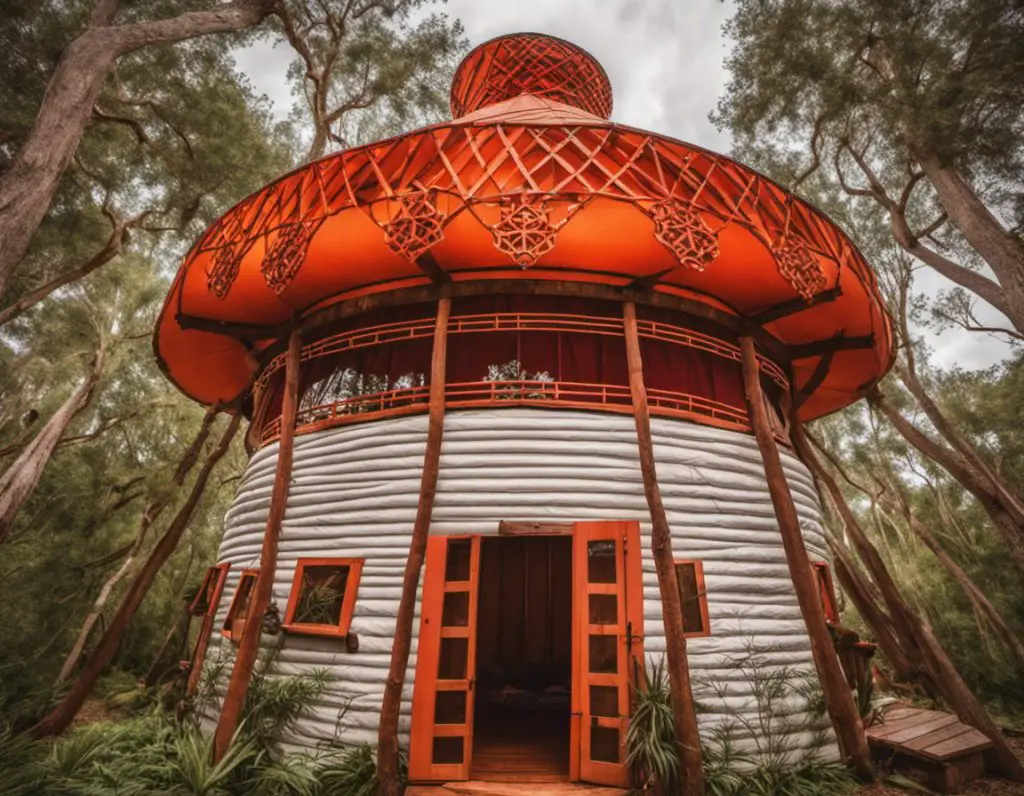How Long Do Yurts Last? A Guide to Yurt Lifespan and Maintenance

Are you considering a yurt for your next shelter or glamping experience? Yurts are an affordable and eco-friendly alternative to traditional housing, and surprisingly durable despite being made with basic materials.
Traditional yurts, like those found in Mongolia, are made with animal skins or felt, while modern yurts use high-end fabric such as DuroLast® Polyurethane Fabric.
The roof is the most susceptible to decay since it is directly exposed to the elements. However, a yurt can easily last more than 20 years if properly cared for.
Many modern yurt manufacturers offer a 15-year warranty on the roof, and the interior wooden structure of the yurt, if made with rot and insect-resistant wood, should last decades.
In this article, we’ll explore the lifespan of yurts, the top yurt manufacturers in the US, and tips for prolonging the lifespan of your yurt.
Related Post: Who lives in a modern yurt?
How Long Do Yurts Last?
With proper care, a yurt can last for over 20 years. Most modern yurt manufacturers offer a 15-year warranty on the roof, and the interior wooden structure made with rot and insect-resistant wood should last for decades. By replacing the roof cover and fabric walls, a yurt could last even longer. Regular maintenance and protection from extreme weather conditions can significantly prolong the lifespan of your yurt.
Prolonging the Lifespan of Your Yurt
If you’re thinking of living in a yurt, it’s essential to know how to prolong its lifespan. A yurt can last for decades if properly cared for, with some manufacturers offering a 15-year warranty on the roof. Factors that affect the lifespan of a yurt include the quality of materials, proper maintenance and cleaning, location and weather conditions, use of the yurt, door and frame, and dome skylight.
Quality of Materials
The quality of materials used to build a yurt is the most significant factor affecting its lifespan. Modern yurts typically use vinyl/polyester fabric, with some manufacturers offering higher-end fabrics such as DuroLast ® Polyurethane Fabric. The type of wood used for the rafters, floor, and lattice walls also affects the longevity of a yurt. Rot and insect-resistant woods such as oak or douglas fir are best, and treating the wood with a sealant will increase its lifespan.
Proper Maintenance & Cleaning
Although yurts require less maintenance than other types of dwellings, basic maintenance will increase their lifespan. Check the integrity of the wooden rafters and walls annually for cracks, moisture damage, and insect damage. Cleaning the yurt’s exterior at least once a year will help increase the fabric’s longevity. Remove all sticks, twigs, and leaves from the roof, especially from the folds of the fabric that tend to accumulate around window and door openings. Wash the outside of the yurt with warm soapy water and a soft bristle brush. Avoid using a pressure washer that can damage the fabric.
Location and Weather Conditions
The location where the yurt is set up can affect its lifespan. Climate is a significant factor when erecting a yurt. In hot, dry locations, UV rays can damage the fabric over time.
To extend the fabric’s life, locate the yurt with some shade to reduce sun exposure.
Yurts set up in areas with high humidity are more prone to mold or mildew that can damage the structure over time.
In wintery climates, ensure the yurt can withstand the average snow load and winds. Removing snow more frequently and adding additional supports under the rafters can avoid damage from snow loads.
Use of the Yurt
The lifespan of your yurt will also be affected by how it is used and who is using it.
For example, if it is being lived in year-round by one couple that cares for it as their home and maintains it with care, it will last longer than if it is being used as a short-term vacation rental where a different group is checking in every week.
Door and Frame
Re-coat the external wood with a solid body or transparent cedar stain once a year or every two years. Before applying the coat, sand the door and the frame. Use a lubricant with Teflon or graphite to keep the doorknob lubricated.
Dome Skylight
The dome skylight is a signature feature of the yurt. While they don’t last forever and may need to be replaced in about 15 years, you can also maintain them.
Use hand-washing liquid and lukewarm water to wash the dome.
Avoid cleaning sprays or chemicals. To avoid scratching the surface, use a soft cloth, not paper towels. Use clean water for rinsing.
Prolonging the lifespan of your yurt requires proper maintenance, quality materials, and consideration of environmental factors such as weather and location.
By following these tips, you can ensure that your yurt lasts for decades, providing you with a comfortable and unique living space.
How Durable Are Yurts?
Yurts have a simple yet sturdy construction that can withstand various weather conditions. The frame of a yurt is typically made of high-quality wood, which can last for a long time if properly maintained. Chestnut wood and Douglas fir are two of the most commonly used woods for yurt frames due to their durability and stability.
The fabric covering of a yurt is the weakest spot in terms of durability, but it can still last for a considerable amount of time. The average lifespan of a yurt’s exterior fabric is around 10-12 years, although some manufacturers offer premium fabrics with a 15-year warranty. Some high-quality fabrics can even last up to 20 years.
Yurt manufacturers usually ensure that their products can withstand wind resistance between 95 and 105 mph. Additional support between rafters can also be added to help the yurt withstand snow load and provide additional stability against harsh weather conditions.
Some yurts use wood siding instead of fabric, which can provide additional security against the elements and last longer.
The average lifespan of a yurt depends on various factors, such as the quality of building materials, location, and maintenance. With proper care and maintenance, a yurt can last far longer than its average lifespan.
Conclusion
The longevity of a yurt depends on various factors such as the durability of its materials, the quality of its construction, and the weather conditions it is exposed to.
To ensure a yurt’s longevity, proper maintenance and upkeep are essential.
Regular inspections and repairs can help prevent wear and tear, and prolong its lifespan.
Yurt owners should also consider the weather resistance of their yurt and take necessary precautions to protect it from harsh weather conditions.
By taking these measures, yurt owners can expect a long lifespan expectancy for their yurt and enjoy the benefits of its unique and sustainable living space for years to come.








